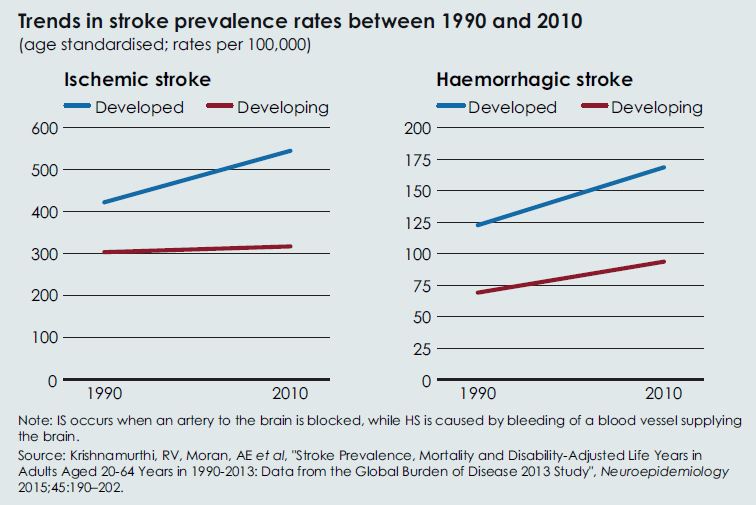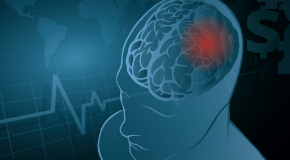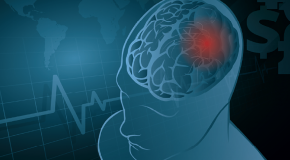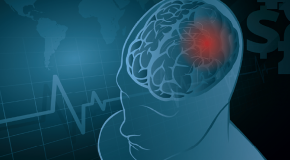There has recently been a flurry of interest in the global stroke burden. In early June The Lancet Neurology published a study on the Global burden of stroke and risk factors in 188 countries, during 1990–2013. The study highlighted the most important contributors to stroke on a global basis as high blood pressure, a diet low in fruit, obesity, a diet high in salt, smoking, and a diet low in vegetables. Interestingly, air pollution ranked seventh globally as a major risk factor for stroke. And this particular point was picked up by some news outlets as it had previously been underestimated as a risk factor.
This renewed interest in stroke is timely given that earlier this year The Economist Intelligence Unit (EIU) had published a major report on this important topic, Addressing the global stroke burden, sponsored by AstraZeneca. The report highlights that stroke is placing an increasingly heavy socioeconomic burden on economies, especially in low- and middle-income countries. It also states that stroke prevalence is growing, and that policymakers must take urgent action to meet global stroke-reduction targets.
Stroke is the second most common cause of death in low- and middle-income countries and the third most common in higher-income countries. It is also a major cause of adult disability. The prevalence of stroke in high-income countries is rising as populations age. Meanwhile, in low- and middle-income countries the Westernisation of diets and lifestyles, coupled with rising levels of obesity and diabetes, represents a significant risk factor for stroke.
The socioeconomic costs of stroke are heavy. In the EU, the financial burden of stroke is about €62bn (US$69bn) per year, or 2-3% of the region's entire healthcare expenditure. In the US, the total cost of stroke in 2010 was estimated at US$73.7bn by the US National Stroke Association. Low- and middle-income countries are particularly at risk from rising costs. In China, for example, total hospitalisation expenditure for all cardiovascular disease, including stroke, exceeded Rmb40bn (US$6bn at current exchange rates) in 2011, or around 1.6% of national health expenditure.
In response to the growing burden of stroke and other non-communicable diseases (NCDs), the UN adopted a resolution on NCDs in 2011, highlighting stroke as an urgent health issue. In 2013 the World Health Assembly endorsed the WHO Global Action Plan for the Prevention and Control of NCDs 2013-2020. And in 2015 the UN announced its Sustainable Development Goals, including a target to reduce by one-third premature deaths from NCDs by 2030.
Initiatives such as these mark progress in combatting the burden of stroke. Yet there is still a lot of room for improvement. And our report highlights a few of these areas, such as:
- Improving education around the risk factors for stroke;
- Enhanced medical data;
- Better management of existing medical conditions;
- Embracing new technologies to monitor risk factors;
- Ongoing improvements in healthcare infrastructure;
- Improved access to healthcare, including primary healthcare, particularly in low- and middle-income countries;
- Progress in rehabilitation;
- Clearly defined care pathways from stroke prevention to rehabilitation.
Read the full EIU report: Addressing the global stroke burden
The views and opinions expressed in this article are those of the authors and do not necessarily reflect the views of The Economist Intelligence Unit Limited (EIU) or any other member of The Economist Group. The Economist Group (including the EIU) cannot accept any responsibility or liability for reliance by any person on this article or any of the information, opinions or conclusions set out in the article.








